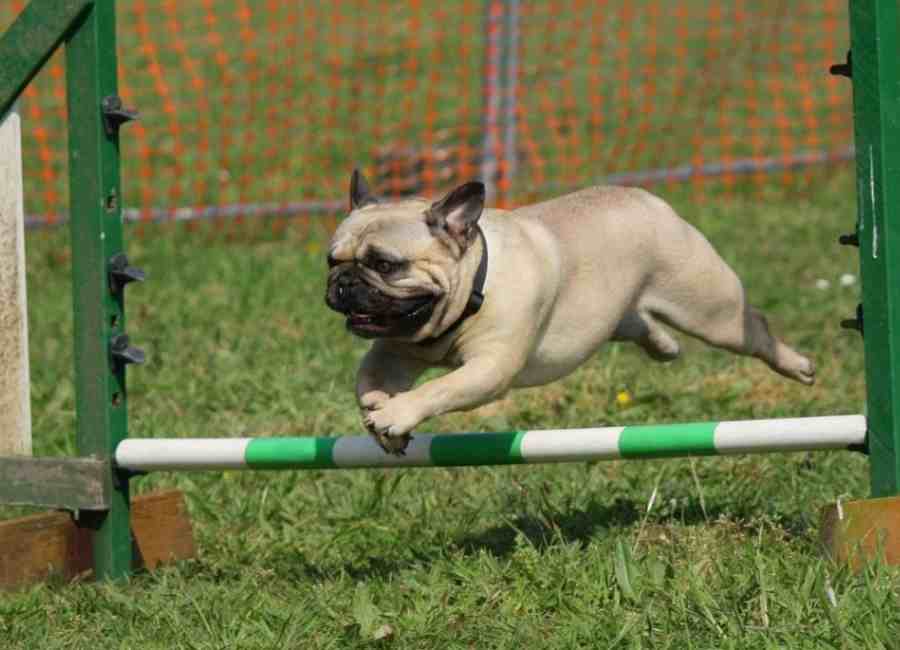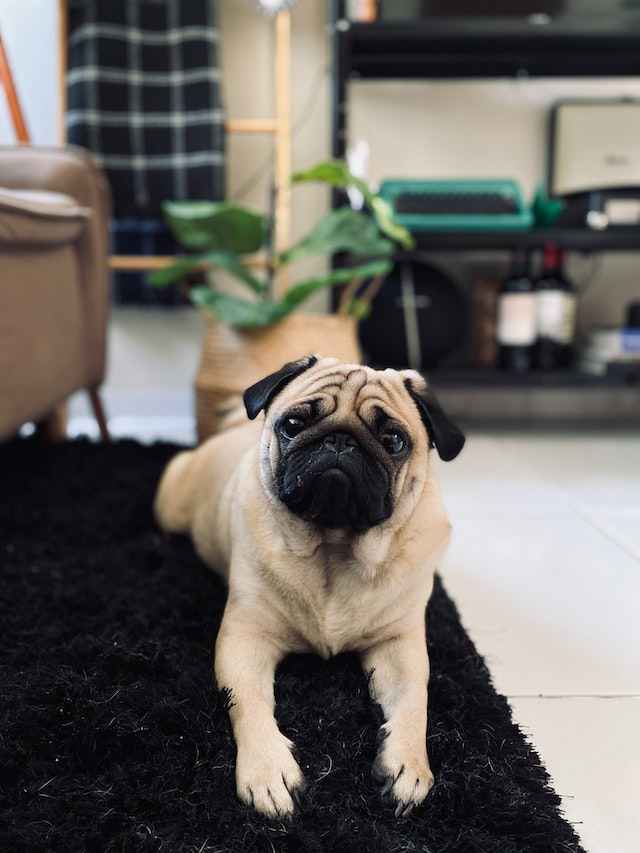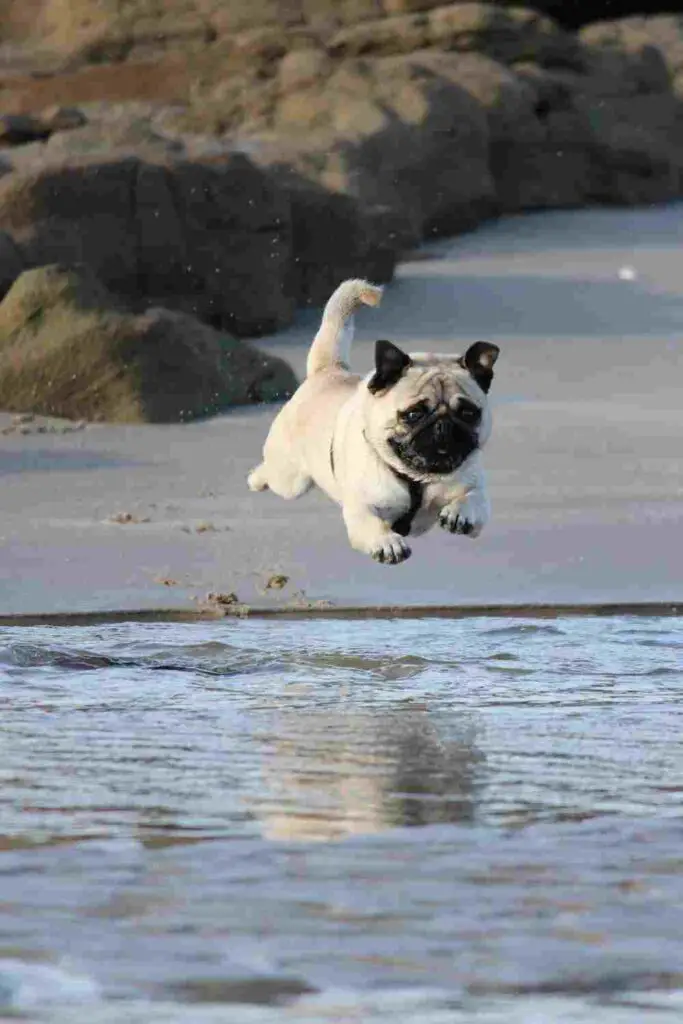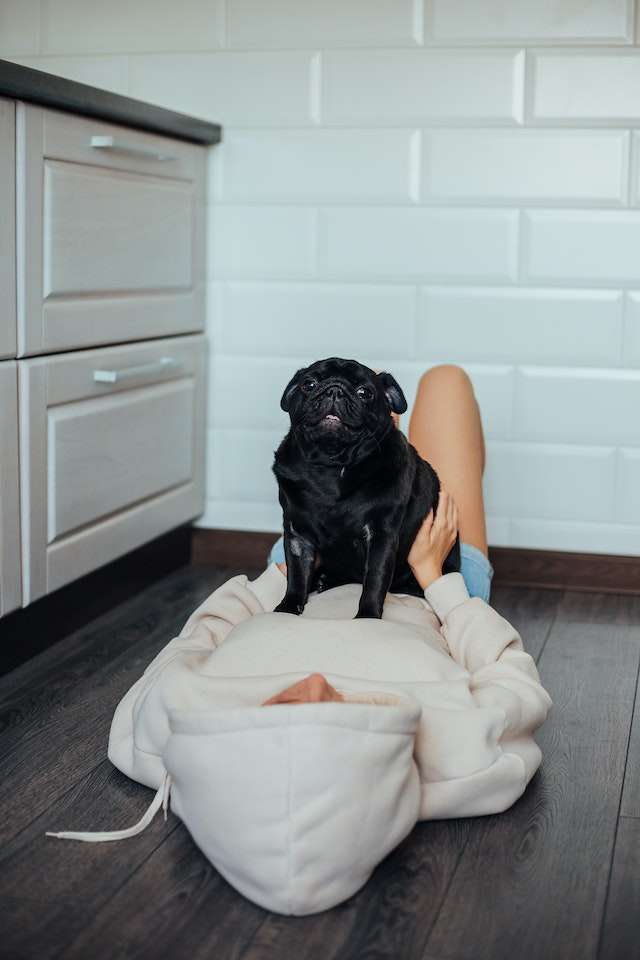11 Suitable Pug Exercise Options

Hey, dear Pug lovers! Are you struggling to keep your furry friend active and healthy? We know it can be tough to exercise with a small breed like a Pug, but fear not!
We’re here to help you out with some great tips and tricks to get your Pug moving and grooving in no time.
After all, exercise isn’t just important for our own health, it’s crucial for our four-legged friends too. So, let’s dive in and learn how to keep those little Pug legs moving!
Benefits of Pug Exercise
Here are several benefits of exercise for pugs:
- Exercise improves fitness and overall health in pugs.
- Exercise aid in weight management and obesity prevention for pugs.
- Exercising pugs increases mobility and joint flexibility
- Exercise helps in strengthening muscles and bones in pugs.
- Exercising pugs help reduce the risk of chronic diseases such as diabetes and heart disease
- Exercise helps to maintain better mental health and mood regulation in pugs.
- Exercising pugs help to increase socialization and bonding with owners
- Improved life expectancy and quality of life in pugs.
It is important to note that pugs, being a brachycephalic breed, may have exercise limitations and require careful monitoring during physical activity to prevent respiratory issues.
Suitable Pug Exercise Options

The following are some of the most common suitable pug exercise options:
1. Walks Around the Neighborhood
A walk around the neighborhood is one of the simplest and most enjoyable exercises for your pug. Pugs are innate explorers who enjoy taking in the sounds, sights and smells of their surroundings.
Aim for two to three quick strolls each day, and make sure to vary the route to keep your pet interested. As your pug encounters various people, animals, and scents along the way, walks offer both mental and physical exercise.
2. Nose Work and Scent Games
Pugs have an excellent sense of smell, making nose work and scent games an ideal exercise option. Hide treats or toys around your home or in your yard and encourage your pug to find them. This activity stimulates their mind and taps into their natural instincts.
Start with simple hiding spots and gradually increase the difficulty level to challenge your pug’s scent-tracking abilities. You can also consider enrolling your pug in nose work classes, where they can learn and refine their skills.
3. Tug-of-War
Playing tug of war with your pug can be a fun and engaging exercise option that taps into their natural instincts. Use a sturdy rope toy or tug toy designed for dogs, and remember to play in a controlled manner to prevent any accidental injuries.
This game strengthens your pug’s jaw muscles and provides a good upper-body workout. Ensure you establish clear rules and boundaries during playtime to maintain a safe and enjoyable experience.
4. Agility Training
While pugs may not be the first breed that comes to mind for agility training, they can still participate in modified versions of this activity. Set up a small obstacle course in your backyard or local park, with low jumps, tunnels, and weaving poles.
Agility training helps improve coordination and keeps your pug active. Start with basic obstacles and gradually introduce more challenging elements as your pug becomes more confident and comfortable.
Use positive reinforcement techniques and small treats to reward good behavior, and keep the sessions short to maintain your pug’s interest and focus.
5. Swimming

Due to their short snouts and weak respiratory systems, pugs are known to be susceptible to overheating. In addition to keeping them cool and working their muscles, swimming is a low-impact exercise option.
To ensure their security and comfort, make sure they are always under supervision and introduce them to the water gradually. If your pug is not a natural swimmer, think about using a canine life jacket to give them extra support.
Learn more about pug swimming tips.
6. Indoor Games
When the weather isn’t cooperating, indoor games can save the day. Pugs are indoor dogs and adapt well to playing inside the house.
Engaging them in games like hide-and-seek, where you hide their favorite treats or toys around the house and let them sniff them out, not only keeps them active but also strengthens their sense of smell.
This mental exercise is equally important for their overall well-being.
7. Playtime with Toys
Being playful with pugs is fun and beneficial because of their playful nature. Invest in a variety of toys that will keep them active and stimulate their minds.
Toys that dispense treats, jigsaw puzzles, and squeaky toys can keep kids entertained mentally and physically while also preventing boredom and promoting movement.
Play engaging games like fetch or tug-of-war with your pug to keep them entertained while strengthening their muscles.
8. Staircase Workouts
If you have a staircase at home, take advantage of it for some indoor exercise. Encourage your dog to climb up and down the stairs, gradually increasing the number of repetitions. Ensure the stairs are not too steep or slippery to avoid any accidents.
Stair exercises provide cardiovascular benefits and help strengthen your dog’s leg muscles. They are especially useful for small spaces or during inclement weather when outdoor walks are not feasible.
9. Hide and Seek
A fun game that engages your pug’s natural instincts and tests their problem-solving skills is hide and seek. Begin by telling your pug to remain still while you look for a hiding place.
When you’re prepared, excitedly call their name and allow them to find you. You could even include treats or toys by hiding them in various places and rewarding your pug when they find them.
This game not only awakens their senses but also reinforces obedience and deepens your relationship with your pug.
10. Dog Park Adventures
Pugs are friendly and sociable by nature, so it’s important to socialize them. A dog park gives your pug the chance to socialize with other dogs, let off steam, and participate in playful activities.
Make sure the park is pug-friendly, with areas for both socializing and resting, and keep an eye on their interactions.
This exercise option satisfies your pug’s need for playtime and social interaction with other dogs in addition to providing physical activity.
11. Short Jogs
While pugs may not be the best long-distance runners due to their short legs and brachycephalic nature, they can still enjoy short jogs alongside their human companions.
Ensure you adjust the pace and distance to match your pug’s fitness level and be mindful of their breathing and any signs of fatigue.
Short bursts of jogging interspersed with walking can be a great way to keep your pug’s heart rate up and provide a change of scenery.
Common Mistakes to Avoid During Pug Exercise

There are some common mistakes that owners make when exercising their Pugs that should be avoided. Here are a few:
- Overexertion: Pugs are brachycephalic, meaning they have a short snout, which can make it difficult for them to breathe. Overexerting your Pug can lead to respiratory distress and overheating, both of which can be dangerous to your pet’s health.
- Exercise during hot weather: Pugs are more prone to heatstroke than some other breeds because of their respiratory issues. It’s important to avoid exercising your Pug in hot weather, especially on hot pavement or in direct sunlight.
- Exercise in short bursts: Instead of long walks or runs, break up your Pug’s exercise routine into shorter, more frequent sessions throughout the day. This will help prevent overexertion and provide your Pug with adequate exercise without putting them at risk of heatstroke or respiratory issues.
- Poor diet: Exercising your Pug without providing them with a healthy, balanced diet can lead to health issues. Make sure to feed them a high-quality, nutrient-dense diet that meets their individual needs.
- Leash pulling: Pugs are known for their stubborn streaks, and this can make leash training challenging. However, pulling on a leash can cause neck injuries and make breathing difficult. It’s important to train your Pug to walk on a loose leash to avoid injury.
- Inadequate hydration: Proper hydration is crucial during exercise. Pugs are prone to overheating and dehydration, so it’s essential to provide them with water before, during, and after exercise.
By avoiding these common mistakes, you can help ensure your Pug stays healthy and happy during exercise.
Related Questions
How often should I exercise my pug?
Adult pugs should ideally be exercised for at least 30 minutes to an hour every day, while puppies may require shorter bursts of exercise multiple times a day. Adjust the duration and intensity based on your pug’s age, energy levels, and overall health.
Can pugs participate in intense physical activities like running?
Due to their brachycephalic nature, pugs are not well-suited for intense physical activities like running long distances. Stick to low-impact exercises, such as walking and interactive play, to prevent respiratory issues and overexertion.
What signs should I look for to determine if my pug is fatigued?
Signs of fatigue in pugs include excessive panting, lagging behind, reluctance to continue walking or playing and seeking shade or a place to rest. Pay close attention to your pug’s behavior and adjust their exercise accordingly.
Is it necessary to consult a veterinarian before starting an exercise routine for my pug?
It is always advisable to consult with a veterinarian before implementing an exercise routine for your pug. They can provide valuable insights based on your pug’s specific health conditions and ensure that the exercise regimen is safe and appropriate.
Can I take my Pug for a hike?
Pugs may not be the best hiking companions, especially for long or steep hikes. They can easily get overheated and tired, so it’s important to plan your hike appropriately and bring plenty of water.
Can Pugs swim?
Some Pugs may enjoy swimming, but not all of them do. It’s important to supervise Pugs while they swim and provide a life jacket for safety reasons.
Learn more about calming down your pug.
Conclusion
Wrapping up, we hope this short read has given you some ideas for how to help your little pug live its healthiest, happiest life.
Remember, exercise is just as important for our furry friends as it is for us humans. It doesn’t have to be a chore, either – with some creativity and enthusiasm, you and your pug can have fun and stay active together.
Whether it’s a brisk walk around the neighborhood, some indoor games, or even puppy yoga, there are plenty of ways to keep your pug moving and grooving. So, get out there and get moving! Your pug will thank you for it.
